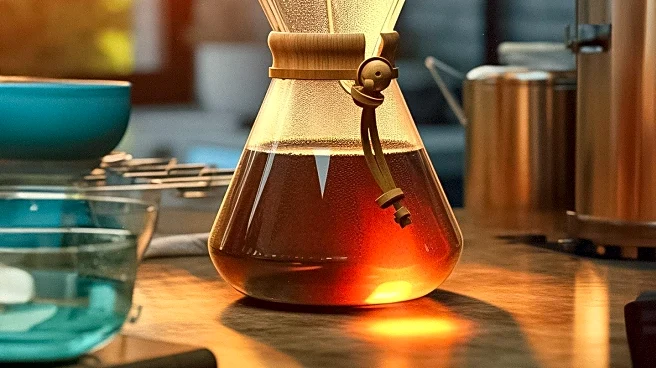What's Happening?
Coffee experts have identified a method known as the 'Golden Ratio' to achieve a consistently balanced cup of coffee. This ratio, recommended by the Specialty Coffee Association, suggests using one ounce
of coffee for every 15 to 20 ounces of water. The approach is based on weight rather than volume, ensuring a precise measurement that enhances flavor without over-extraction or under-extraction. Kaleena Teoh, co-founder and director of education for Coffee Project New York, emphasizes the importance of this ratio for those using drip coffee makers, French presses, or pour-over systems. The method aims to eliminate the guesswork in coffee brewing, providing a reliable starting point for coffee enthusiasts.
Why It's Important?
The adoption of the 'Golden Ratio' in coffee brewing could significantly impact consumer satisfaction and reduce waste. By providing a consistent method for brewing, coffee drinkers can avoid the common pitfalls of overly bitter or weak coffee, leading to a more enjoyable experience. This method also encourages the use of fresh beans and precise measurements, which can enhance the overall quality of the coffee. For the coffee industry, promoting such standards could lead to increased consumer loyalty and potentially higher sales of quality coffee beans and brewing equipment.
What's Next?
As more coffee enthusiasts and professionals adopt the 'Golden Ratio', there may be a shift towards more precise brewing methods in both home and commercial settings. Coffee shops might begin to emphasize the use of scales and burr grinders to ensure consistency and quality. Additionally, educational initiatives could arise, teaching consumers how to apply these principles at home. This trend could also influence the design and marketing of coffee brewing equipment, with manufacturers highlighting compatibility with the 'Golden Ratio'.
Beyond the Headlines
The emphasis on precision in coffee brewing reflects a broader cultural shift towards artisanal and craft approaches in food and beverage preparation. This trend aligns with consumer desires for authenticity and quality, potentially influencing other areas of the culinary world. The focus on measurement and consistency could also lead to innovations in coffee technology, such as smart scales and grinders that automate the process, making it more accessible to the average consumer.













